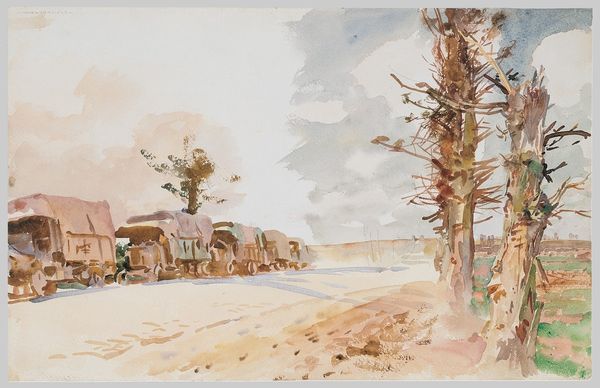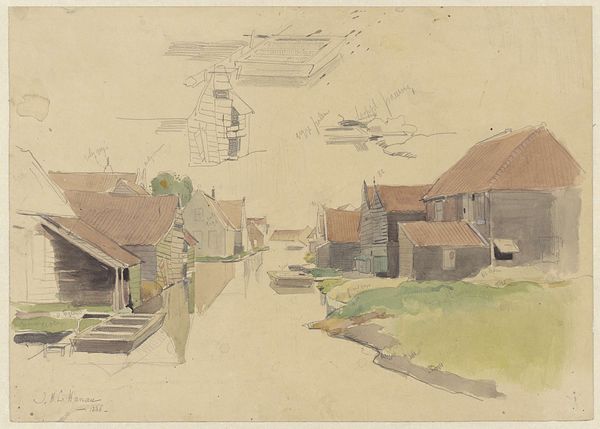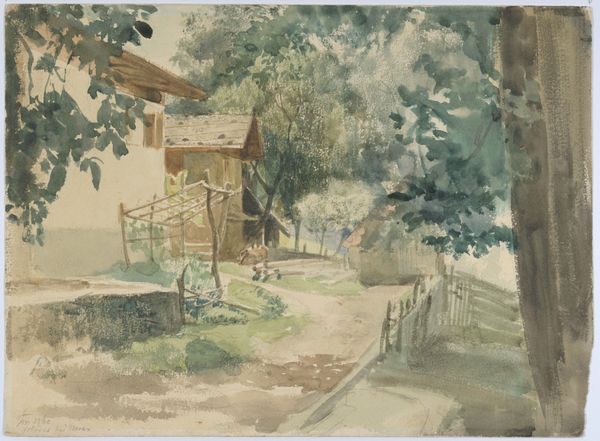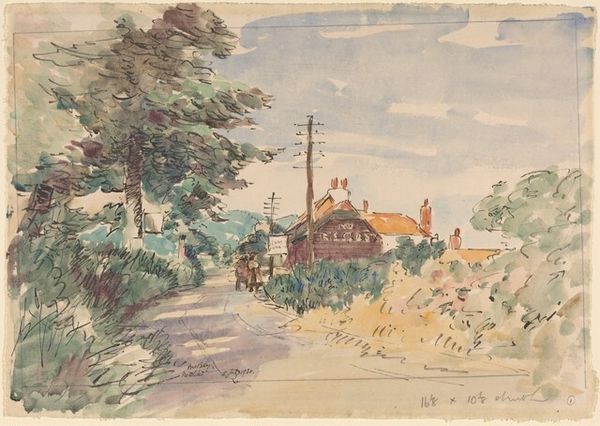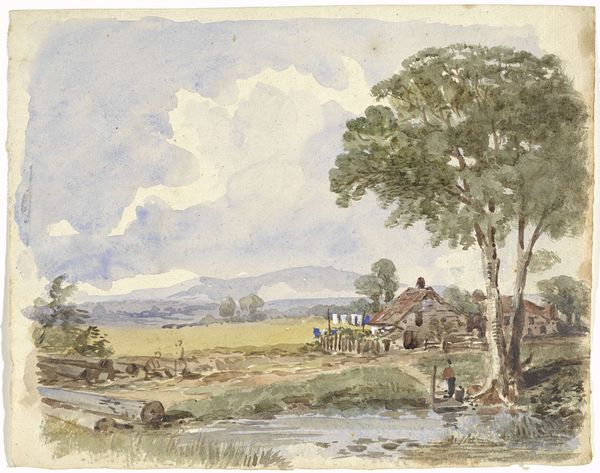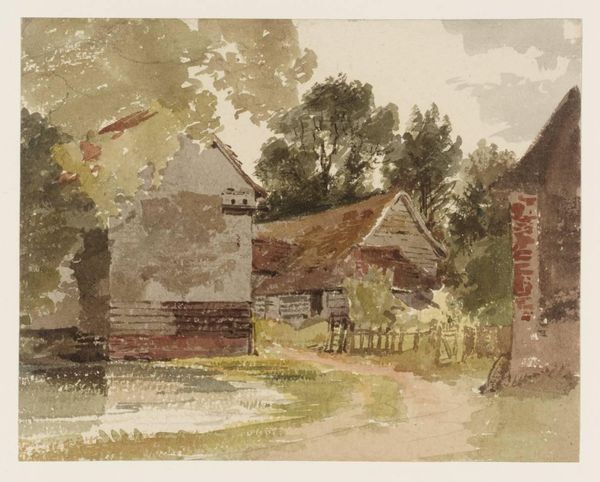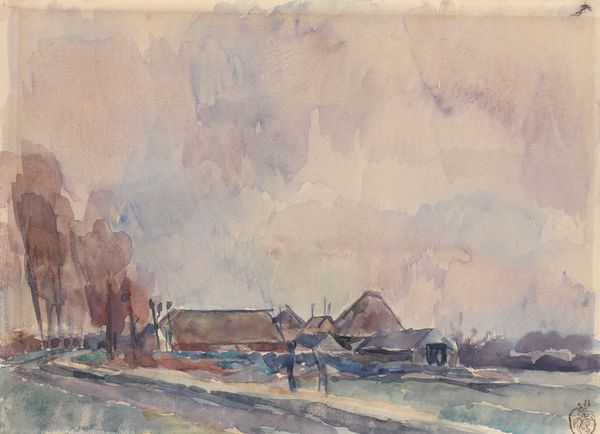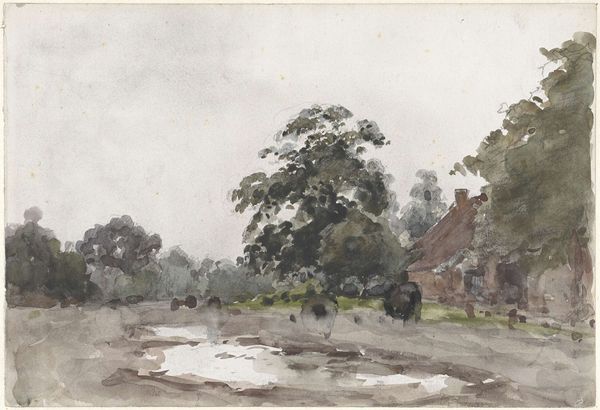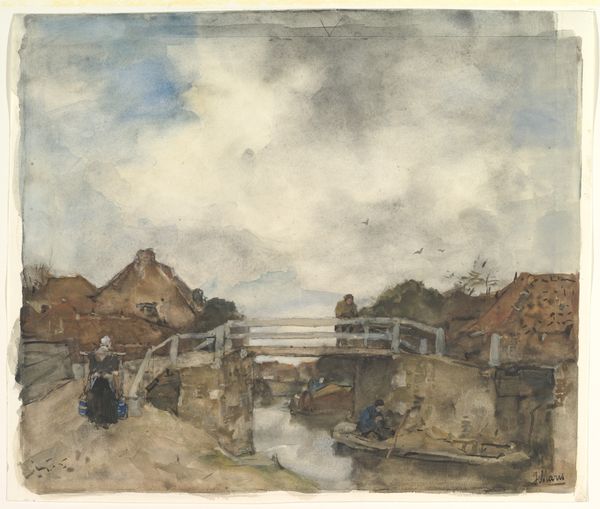
Dimensions: overall (approximate): 32.1 x 49.7 cm (12 5/8 x 19 9/16 in.)
Copyright: National Gallery of Art: CC0 1.0
Editor: So, this watercolor, called *Roydon*, was completed by James McBey in 1930. It strikes me as such a peaceful scene, like a moment frozen in time. What do you see in this piece, from a historical perspective? Curator: From a socio-historical perspective, I see a romanticized view of rural life in England during a period of significant social and economic change. The interwar period witnessed increasing urbanization and industrialization. Paintings like this served to valorize and almost mourn a disappearing way of life. What do you make of McBey's artistic choices? Does his style contribute to this sense? Editor: Absolutely. The loose brushstrokes and soft colors create this dreamy, almost nostalgic feel. It reminds me of the Impressionists, idealizing scenes. Curator: Precisely. But beyond style, consider the political implications of such imagery. Who was the intended audience for these works? What values did they uphold, consciously or unconsciously? Were they responding to social anxiety through selective memory? Editor: So, these weren’t necessarily neutral depictions, but possibly endorsements of a certain social order? It’s like the painting is making a subtle statement. Curator: Indeed. Visual culture is never created in a vacuum. Ask yourself: Whose story is being told and, perhaps more importantly, whose stories are being omitted? What might this mean in a historical context? Editor: Wow, that's something I hadn't really considered. I will definitely view landscape art differently now, understanding it as not just aesthetic, but reflective of societal values and political undertones. Curator: Exactly. Looking at art through the lens of social and political context enriches our understanding, and this is what is exciting about historical analysis.
Comments
No comments
Be the first to comment and join the conversation on the ultimate creative platform.
